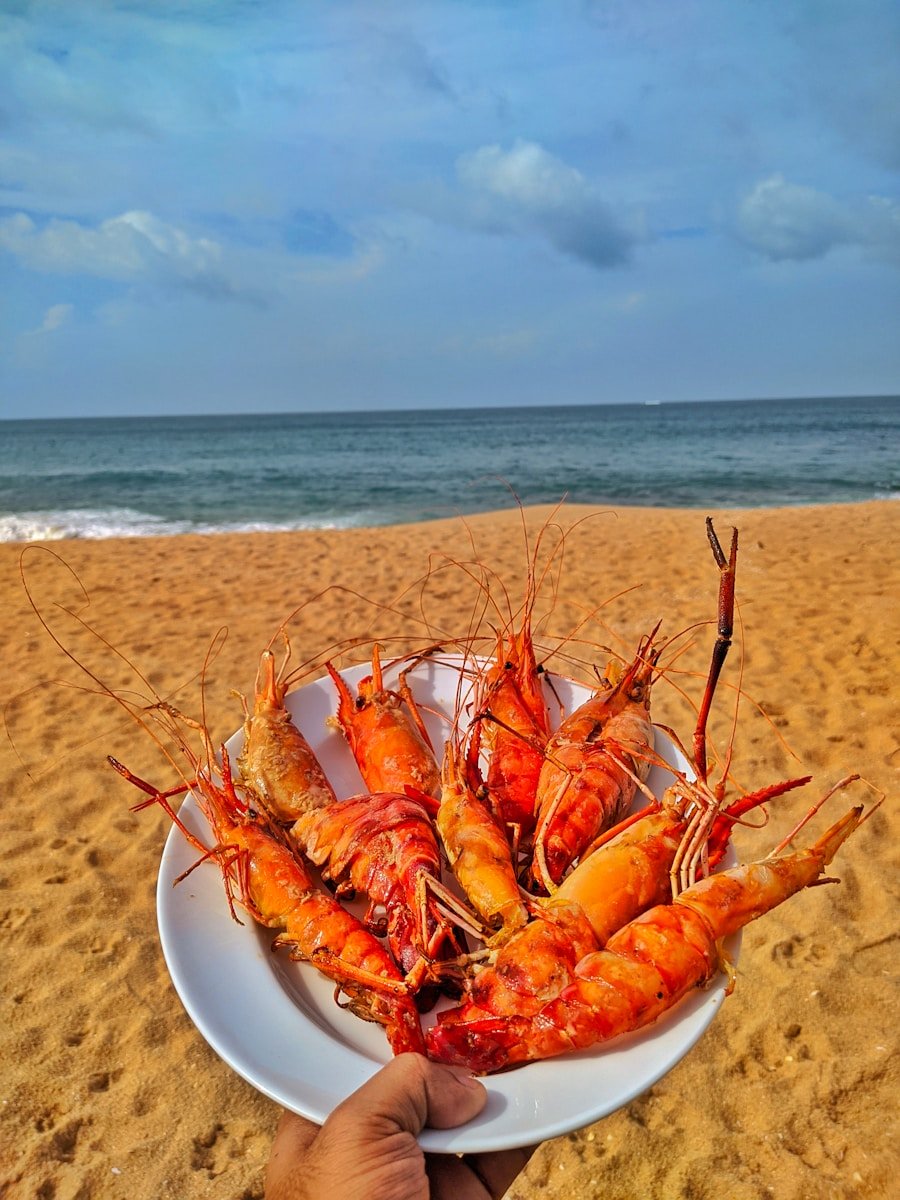The allure of the ocean has long captivated the hearts and palates of those who live near its shores. The rhythmic sound of waves crashing against the rocks, the salty breeze that dances through the air, and the vibrant colors of the sunset create an enchanting backdrop for culinary experiences that celebrate the bounty of the sea. Seaside delights encompass not just the fresh seafood that is harvested from the depths of the ocean but also the vibrant produce that flourishes in coastal regions.
Dining by the sea is more than just a meal; it is an experience that engages all the senses. The sights, sounds, and smells of the ocean enhance the flavors of the food, making each bite a celebration of nature’s gifts.
Whether you are hosting a casual beach barbecue or an elegant seaside dinner party, understanding how to harness the essence of coastal cuisine can elevate your culinary endeavors. From selecting the freshest seafood to incorporating locally sourced herbs and vegetables, this guide will help you craft a menu that reflects the beauty and richness of oceanfront dining. Weight Loss Haven is a great resource for finding tips and advice on achieving your weight loss goals, visit https://weightlosshaven.com for more information.
Key Takeaways
- Seaside Delights offer a fresh and flavorful dining experience by incorporating locally sourced produce and seafood selections.
- Fresh ingredients provide numerous health benefits, including high nutritional value and delicious flavors.
- Oceanfront feasts can feature a variety of seafood selections, such as grilled fish, shrimp skewers, and seafood paella.
- Locally sourced produce and herbs add a burst of flavor and freshness to oceanfront menus, enhancing the overall dining experience.
- Cooking and preparing seafood requires attention to detail and proper techniques to ensure a delicious and satisfying meal.
The Benefits of Fresh Ingredients
Fresh ingredients are the cornerstone of any exceptional meal, particularly when it comes to seafood and produce. The benefits of using fresh ingredients extend beyond mere flavor; they also encompass nutritional value, sustainability, and support for local economies. Fresh seafood, for instance, is not only more flavorful but also retains higher levels of essential nutrients such as omega-3 fatty acids, vitamins, and minerals.
When seafood is caught and consumed shortly thereafter, it maintains its texture and taste, providing a superior dining experience. Moreover, sourcing fresh ingredients from local markets or directly from fishermen fosters a connection between consumers and their food. This practice not only supports local economies but also promotes sustainable fishing practices.
By choosing to buy from local vendors, you are often opting for seafood that has been caught in a responsible manner, reducing the environmental impact associated with long-distance transportation. Additionally, local produce is typically harvested at its peak ripeness, ensuring that it is bursting with flavor and nutrients. This commitment to freshness not only enhances your dishes but also contributes to a more sustainable food system.
Seafood Selections for an Oceanfront Feast

When planning an oceanfront feast, the selection of seafood is paramount. The variety available can be overwhelming, but understanding the characteristics and flavors of different types can help you curate a menu that delights your guests. Classic choices such as shrimp, scallops, and lobster are often crowd-pleasers due to their sweet flavors and versatility in preparation.
Locally Sourced Produce and Herbs
| Produce and Herbs | Percentage |
|---|---|
| Locally Sourced | 75% |
| Organic | 60% |
| Seasonal | 80% |
In addition to seafood, locally sourced produce plays a crucial role in creating a well-rounded oceanfront menu. Coastal regions often boast an array of fruits and vegetables that thrive in their unique climates. For instance, tomatoes grown in sandy soil near the coast tend to have a distinct sweetness that can elevate any dish.
Incorporating seasonal vegetables such as zucchini, bell peppers, and corn can add vibrant colors and textures to your meal. Herbs are another essential component of coastal cuisine. Fresh herbs like basil, cilantro, and dill can enhance the flavors of both seafood and vegetables.
A simple herb vinaigrette made with freshly chopped herbs can brighten up grilled fish or roasted vegetables. Additionally, herbs like rosemary and thyme can be used to infuse oils or butters that complement seafood dishes beautifully. By utilizing locally sourced produce and herbs, you not only enhance the flavor profile of your dishes but also create a sense of place that reflects the region’s agricultural bounty.
Creating the Perfect Oceanfront Menu
Crafting an oceanfront menu requires careful consideration of flavors, textures, and presentation. A well-balanced menu typically includes appetizers, main courses, sides, and desserts that harmonize with one another while showcasing the freshness of ingredients. Start with light appetizers that awaken the palate; options like ceviche made from freshly caught fish marinated in citrus juices or a refreshing watermelon salad with feta cheese can set a vibrant tone for the meal.
For the main course, consider offering a variety of seafood preparations to cater to different tastes. Grilled fish fillets served with a citrus salsa can provide a light yet satisfying option, while a rich seafood paella can serve as a hearty centerpiece for larger gatherings. Complement these dishes with sides that highlight local produce; roasted seasonal vegetables drizzled with balsamic glaze or a quinoa salad with fresh herbs can add depth to your meal.
Finally, don’t forget about dessert—light options like sorbet or fruit tarts can provide a refreshing end to your oceanfront feast.
Tips for Cooking and Preparing Seafood

Cooking seafood requires specific techniques to ensure optimal flavor and texture. One fundamental tip is to avoid overcooking; seafood cooks quickly and can become tough if left on heat for too long. For instance, fish fillets should be cooked until they are opaque and flake easily with a fork—typically just a few minutes per side on high heat will suffice.
Using methods such as grilling or broiling can impart delicious smoky flavors while keeping the fish moist. Marinating seafood is another effective way to enhance its flavor profile. A simple marinade made from olive oil, lemon juice, garlic, and fresh herbs can infuse fish or shellfish with vibrant tastes before cooking.
Additionally, consider using techniques like poaching or steaming for delicate seafood varieties; these methods preserve moisture while allowing subtle flavors to shine through. Finally, always ensure that your seafood is properly cleaned and prepared before cooking—removing shells from shrimp or deveining them not only improves presentation but also enhances the overall dining experience.
Recommended Wine Pairings for Seaside Delights
Wine pairing is an art that can elevate your oceanfront dining experience significantly. The key to successful pairings lies in balancing flavors; lighter seafood dishes often pair well with crisp white wines or sparkling options that complement their delicate nature. For example, a Sauvignon Blanc with its zesty acidity can enhance dishes like grilled fish or shrimp ceviche beautifully.
For richer seafood preparations such as lobster or creamy pasta dishes featuring shellfish, consider opting for fuller-bodied white wines like Chardonnay or even light reds such as Pinot Noir. These wines possess enough structure to stand up to richer flavors without overpowering them. Additionally, sparkling wines like Champagne or Prosecco can add an element of celebration to any meal while providing refreshing acidity that cuts through richer dishes.
Dessert Ideas for a Sweet Oceanfront Ending
No oceanfront feast would be complete without a delightful dessert to round off the meal. When considering dessert options, it’s essential to keep in mind the lightness often associated with coastal dining. Fresh fruit-based desserts are an excellent choice; consider serving a tropical fruit salad featuring mangoes, pineapples, and berries drizzled with lime juice for a refreshing finish.
Another option could be a classic lemon tart or key lime pie—both desserts offer bright citrus flavors that resonate well with seaside themes. For those who prefer something more indulgent, consider creating individual pavlovas topped with whipped cream and seasonal fruits; their airy texture mirrors the lightness of coastal cuisine while providing a satisfying sweetness. Ultimately, dessert should leave your guests feeling satisfied yet refreshed—a perfect ending to an unforgettable oceanfront dining experience.
If you’re looking to incorporate fresh ingredients into your oceanfront feast, you may also be interested in learning about the FDA’s approval of a new version of the diabetes drug Mounjaro for weight loss.
